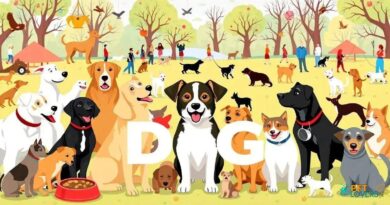What is Vocalization
What is Vocalization in Dogs?
Vocalization refers to the various sounds that dogs make to communicate with humans and other animals. These sounds can range from barking, whining, growling, howling, and even yipping. Each type of vocalization serves a different purpose and can convey a wide array of emotions and messages. Understanding what vocalization means is crucial for dog owners who wish to interpret their pet’s needs and feelings accurately.
The Importance of Barking
Barking is perhaps the most recognized form of vocalization among dogs. It can serve multiple functions, such as alerting their owners to potential dangers, expressing excitement, or even seeking attention. Different breeds may have distinct barking styles, and the context in which a dog barks can provide valuable insights into what they are trying to communicate. For instance, a high-pitched bark may indicate playfulness, while a deep, steady bark could signal a warning.
Whining: A Sign of Distress or Desire
Whining is another common vocalization that often indicates a dog’s emotional state. Dogs may whine when they are anxious, in pain, or seeking attention. This sound can be particularly prevalent in puppies who are learning to communicate their needs. Understanding the context of the whining—such as whether it occurs during separation from their owner or when they want to go outside—can help owners respond appropriately to their dog’s needs.
Growling: Communication of Warning
Growling is often perceived as a negative vocalization, but it can serve as a crucial form of communication. Dogs may growl to warn others to back off or to express discomfort. It is essential for dog owners to recognize that growling is not inherently aggressive; rather, it can be a dog’s way of setting boundaries. Observing the dog’s body language in conjunction with the growl can provide further clarity on the situation.
Howling: A Call to the Wild
Howling is a vocalization that harkens back to a dog’s ancestral roots. This sound can be used to communicate over long distances, and it often occurs in response to certain stimuli, such as sirens or other dogs howling. While some breeds are more prone to howling than others, it can also be a way for dogs to express loneliness or seek companionship. Understanding the reasons behind howling can help owners provide the necessary support for their pets.
Yipping: The Playful Expression
Yipping is a high-pitched vocalization often associated with excitement and playfulness. Small dog breeds, in particular, may exhibit this vocalization during playtime or when they are particularly happy. Recognizing yipping as a positive expression can enhance the bond between the dog and its owner, encouraging more interactive play sessions that cater to the dog’s energetic nature.
Vocalization and Breed Differences
Different dog breeds exhibit varying tendencies in vocalization. For instance, hounds are known for their howling, while terriers may be more prone to barking. Understanding these breed-specific vocalization patterns can help owners set realistic expectations and tailor their training approaches accordingly. Additionally, some breeds may require more vocalization training to minimize excessive barking or whining.
Environmental Influences on Vocalization
The environment plays a significant role in a dog’s vocalization habits. Factors such as noise levels, the presence of other animals, and the dog’s socialization experiences can all influence how often and in what manner a dog vocalizes. For example, a dog that lives in a busy urban area may bark more frequently due to the constant stimuli, while a dog in a quieter setting may vocalize less often.
Training and Managing Vocalization
Training can significantly impact a dog’s vocalization habits. Positive reinforcement techniques can help manage excessive barking or whining, teaching dogs when it is appropriate to vocalize and when it is not. Consistency in training and understanding the underlying reasons for vocalization can lead to a more harmonious relationship between dogs and their owners.



